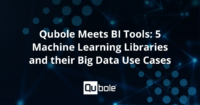
Big data projects are becoming much more common as organizations seek to take advantage of all that big data has to offer. While many companies are on board with the idea of implementing a big data project, properly executing one is another matter entirely. Many factors have to be considered, from what types of legacy systems you have at your disposal to the talent and skills within your organization in the first place. One of the most important decisions that could affect nearly every aspect of a big data project is the preferred programming language you use. There are many options to choose from, some being fairly common while others are more specialized in nature. Picking the right one for your specific project can often be the difference between a highly successful big data project and one that only reaches a fraction of its potential.
Python
If there’s one major battle on this particular front, that would have to be between Python and R. The field of data science being relatively new, and many data scientists are debating which should be the prominent programming language for big data. Python has been around for a while, specifically more in academic circles, but its real strength lies in Natural Language Processing. If your big data project deals with neural networking, Python will likely be the best fit for you. It’s a traditional object-oriented language, one that stresses added levels of productivity and readability. Data scientists that prefer Python over the alternatives are usually those who work in an engineering environment. The deeper into data analysis you go, the more likely you’ll be using Python.
R
Not to be outdone by Python, R offers its own advantages over its rivals. R is popular among data scientists with a background in statistics. Think of R as the programming language that’s best for user-friendly data analysis and any project that’s heavily involved in statistics. If you’re also engaged in a big data project that uses extensive graphical models, R will be your go-to language. With adaptations coming from data scientists and researchers, R appears to be one of those programming languages that can adapt to changing needs. There still might be an adjustment period to reach R’s maximum productivity level.
Scala
R and Python may dominate most of the conversation, but other programming languages should be considered as well. That includes Scala, which combines many of the beneficial features of other languages into one tight, easy-to-use tool. If you’re part of a company that starts big data projects that deal with very large sets of data, Scala will be the language you’ll want to use. Organizations like Twitter and LinkedIn get a lot out of Scala in part because it’s so useful for large data sets that are massively distributed. Scala is quickly gaining in popularity, in part because it’s the programming language behind such useful big data tools as Kafka and Spark. It also enables free access to the entire Java ecosystem, basically taking Java and getting rid of Java’s more restrictive and tedious coding facets. Scala can help data scientists build applications that are truly scalable, allowing greater interactions with databases and the construction of data pipelines. For example, data projects involving analysis of data from wearable technology will often use Scala as a primary language.
Using Multiple Languages
Of course, it’s worth mentioning that data projects can be as varied and complex as the data itself. While you may come across situations where Python or R is the better choice, you’re just as likely to discover that multiple languages may be needed to get the results that you’re looking for. Data science often requires the use of different programming languages at the same time. No single language dominates the data science sphere. That means a data science team filled with people skilled in multiple languages is preferable. One aspect of a project, like building machine learning pipelines, may use Python, but the data can then be transferred to a Spark application where Scala is then used. The more diverse the skillsets, the more agile your data science team will be.
Ultimately, the programming language you end up choosing for your big data project will depend on your project’s specific needs. How much data will you be analyzing? How quickly does that data need to be analyzed? What other platforms might you use during the course of the project? What do your data scientists already know in terms of programming languages? The answers to these questions will help you determine which languages are the best for you to use.




